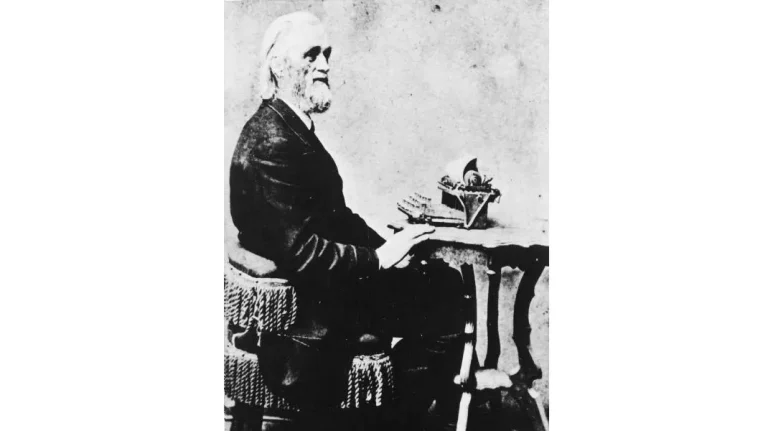What Corporate Communicators Can Learn from Jimmy Breslin
4 lessons drawn from a new collection of the famed New York columnist’s work
Corporate communicators trying to polish their writing will find valuable lessons reading Jimmy Breslin, an irascible New Yorker with little patience for business executives whom he often found boring.
All too often internal communications and press releases are boring because of flaws in reporting: missing facts, neglected details and emotionless quotes. Fixing those flaws comes down to observation and interviewing. That’s where Breslin can help.
“He was the greatest columnist of my era and practically all of it was reporting,” writer Tom Wolfe said after Breslin died in 2017, a year before Wolfe.
“Breslin: Essential Writings,” a collection recently published by The Library of America, demonstrates time and again that great writing starts with great reporting.
Moreover, Breslin worked on deadline, unlike some of his compatriots in the “The New Journalism” movement. He had long stints as a columnist with three New York daily newspapers.
Reporting isn’t the only lesson to be learned from Breslin, who was a master of story structure, first sentences and unadorned prose. Here’s four lessons from reading the legendary New York City columnist.
1. Details, details. “A Death in Emergency Room One” was published in the New York Herald Tribune two days after President John Kennedy was shot and killed on Nov. 22, 1963.
“The call bothered Malcolm Perry,” is the first sentence.
Perry, a surgical resident, was in the cafeteria at Parkland Memorial Hospital when he heard the emergency page on the public address system for his boss, who was never paged and was out of town.
“Malcom Perry looked at the salmon croquettes on the plate in front of him. Then he put down his fork and went over to a telephone,” Breslin wrote.
Why it works. As the rest of the piece shows, Breslin questioned Perry step-by-step on every detail of that day, including what he had for lunch.
Most importantly, Breslin asked Perry, “How did you feel?” about hearing the PA announcement even before he heard the terrible news.
That story, like others in the book, “just shows the range of not just Jimmy’s talent as a writer but his talent as a reporter, and really a novelist,” author and former sports columnist Mike Lupica said at a publicity event about the book earlier this year.
2. Opening anecdote. The ER column is one of two Breslin pieces about the Kennedy assassination often taught in journalism schools. Here’s how the other one begins:
Clifton Pollard was pretty sure he was going to be working on Sunday, so when he woke up at 9 a.m., in his three-room apartment on Corcoran Street, he put on khaki overalls before going into the kitchen for breakfast. His wife, Hettie, made bacon and eggs for him. Pollard was in the middle of eating them when he received the phone call he had been expecting. It was from Mazo Kawalchik, who is the foreman of the gravediggers at Arlington National Cemetery, which is where Pollard works for a living. “Polly, could you please be here by 11 o’clock this morning?” Kawalchik asked. “I guess you know what it’s for.” Pollard did. He hung up the phone, finished breakfast, and left his apartment so he could spend Sunday digging a grave for John Fitzgerald Kennedy.
“It’s An Honor” was published on Nov. 26, 1963, also in the Herald Tribune.
Why it works. We again see Breslin’s close attention to detail. He often started his columns with an anecdote, but seldom seemed to use a nut graph, a paragraph that sums up the story in a nutshell. We encourage nut graphs as a way to tell readers the direction of the story.
Sometimes, as here, Breslin ended his anecdotes with what we call a hook, a sentence that tells readers where the story is headed.
3. Meet your guide. Breslin was at home in Queens when he heard at 11:20 p.m. on Dec. 8, 1980, that one of the Beatles had been shot on the Upper West Side. He raced into Manhattan to report the story and then to the New York Daily News newsroom, making the 1:30 a.m. deadline, he said later with pride.
“Are You John Lennon?” was published the next day. Here’s how it starts:
That summer in Breezy Point, when he was eighteen and out of Madison High in Brooklyn, there was the Beatles on the radio at the beach through the hot days and on the jukebox through the nights in the Sugar Bowl and Kennedys. He was young and he let his hair grow and there were girls and it was the important part of life.
Last year, Tony Palma even went to see “Beatlemania.”
And now, last night, a thirty-four-year-old man, he sat in a patrol car at Eighty-second Street and Columbus Avenue and the call came over the radio: “Man shot, One West Seventy-second Street.”
(New Yorkers would know that the Sugar Bowl bar and Kennedy’s chophouse are in the Breezy Point neighborhood on the Rockaway Peninsula.)
Why it works. Breslin connects the opening anecdote to the story with the radio call, the quick hook that tells the audience where we’re going.
This and the two previous stories demonstrate a narrative technique Breslin often used: a character who serves as a guide through the story. Usually, Breslin’s guide is not the central figure in the story, like Perry, but a witness, like Palma or Pollard. Telling stories from the perspective of the guide will give a story a structure.
4. Listen for the quote. Part of the trick to getting good quotes is how you ask the questions, Jim Ylisela, senior partner with Ragan Consulting Group, has written.
But part of it is having a good ear. Consider this ending to a column about the struggle with AIDS by David Camacho, published Nov. 3, 1985, in the Daily News.
And then I called David up Friday to check on a couple of things and he answered the phone with a dull voice.
“You’re not laughing,” I said.
“No. I Just got off the phone with the doctor. He told me the test results came back and he thinks the cancer has spread to the lungs. I just got off the phone with him.”
I said nothing.
“I’m trying to keep myself together by washing the windows,” he said.
The column was part of the portfolio that earned Breslin a Pulitzer Prize in 1986.
For corporate communicators, following these examples may seem like a tall order. Breslin would agree.
In 1969, when he was running a symbolic campaign for political office, according to Gloria Steinem, Breslin said, “Anything that isn’t writing is easy.”
Tom Corfman thinks reading is a great way to learn to write better. He’s a senior consultant with Ragan Consulting Group, where he directs the Build Better Writers program.
Contact our client team to learn more about how we can help you with your communications. Follow RCG on LinkedIn and subscribe to our weekly newsletter here.







